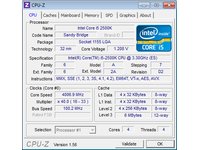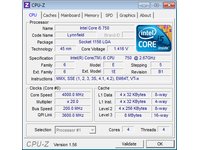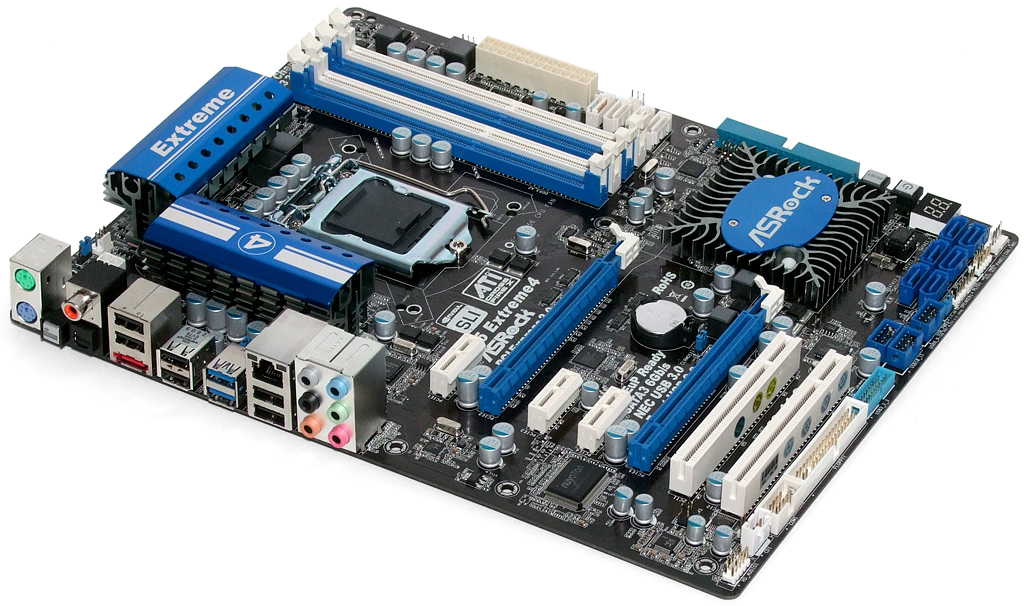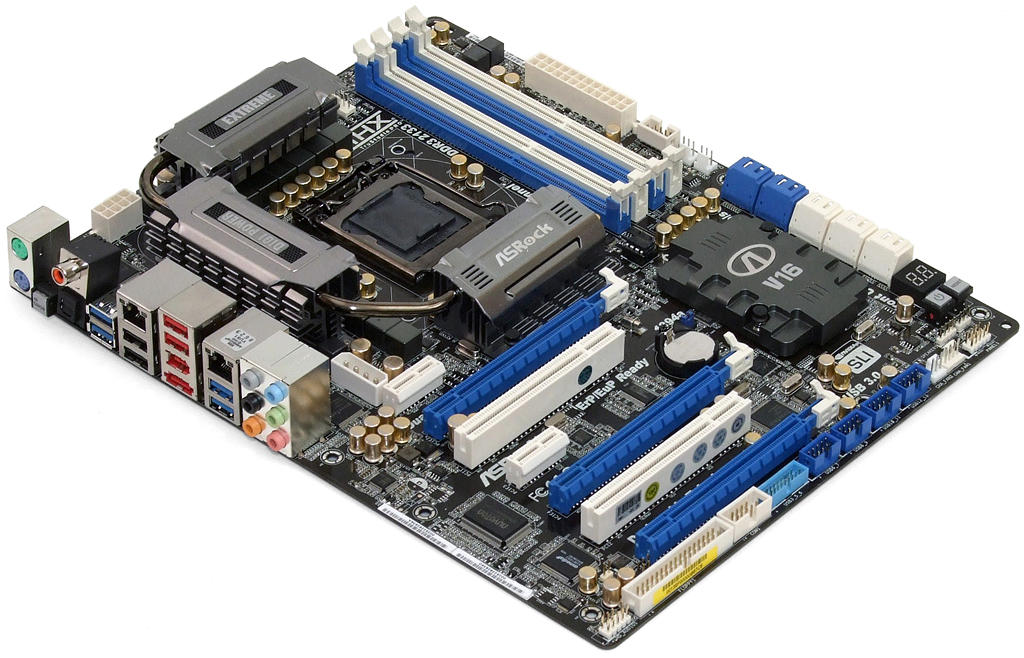ASRock P67 Transformer: P67 Gets LGA 1156 Compatibility
Upgrading to Intel’s P67 will certainly require a new motherboard, but the fact that you won’t need a new CPU appears to be Intel’s dirty-little-secret. ASRock found the secret and exploited it, bringing next-generation performance to today’s processors.
The “Friendly Competition”
ASRock’s P67-based LGA 1156 solution is the midpoint between two generations of technology, so it makes sense to compare it to both sides. First, we brought out one of our most recent P55 motherboards, ASRock’s P55 Extreme4, to compare P55 to P67 chipset performance with all remaining parts identical.
Keeping with a single brand of motherboard should help maintain consistency between tests, and the P55 Extreme4 is the best ASRock product we’ve seen to date.
Yet, nobody will buy an upgrade motherboard if they believe their older LGA 1156-based CPU has lost its performance relevance. ASRock’s P67-Extreme6 allows us determine how much better the new chipset can perform when paired with a second-gen Core CPU.
With previous-generation and next-generation platforms setting the boundaries for comparing ASRock’s new cross-generational motherboard, we needed to find two processors that would make this a fair test. The only next-generation CPU we had on hand was Core i5-2500K quad-core chip, and fairness forced us to dig deep into our parts bin to find a similar-spec LGA 1156 model.


Both processors were set to identical clock speeds, yet getting there on the older CPU was no easy task. To put it frankly, this particular Core i5-750 is a dud, and keeping it stable at 4.00 GHz required high core voltage levels and low temperatures. The only results that you might consider unfair as a result are the power consumption numbers, and we’ll keep that in mind when discussing efficiency.
Get Tom's Hardware's best news and in-depth reviews, straight to your inbox.
Current page: The “Friendly Competition”
Prev Page LGA 1156 On P67? Meet The P67 Transformer Next Page Test System Configuration-
James296 Hmmm, I'll be keeping an eye on ASRock for future products that I may buy. especially for my next buildReply -
kcorp2003 My next build is in Q1 or Q2 2012. where ivy bridge cpu is eight-core processors for mainstream and quad-core processors at the entry level segment. As of right now i'm sticking to my Q9550 3.4Ghz and HD4870. I can live with the extra few seconds or mins for boot up, loading, compressing, unzip, converting, installing, etc... can waste the time reading some toms articles :) or other important things like eating.Reply
Also most game engines aren't optimize yet to take advantage what I have. except for Dx11. I know frostbite engine 2.0 thats making Battlefield 3 will be optimize for multi core and Dx11.
All of my games plays well on 1680x1050 on medium settings. So I'm good. Don't need anything yet. Unless I want to game in 3D. then ill need to invest for a new complete build to play 3D comfortably; GPU (crossfire or SLI), 120Hz monitor, new CPU @ 4Ghz, Window 7, SSD (hopefully), x78 mobo, RAM, and wrap it up with a nice case with lots of air flow and wiring management. which i'm saving up money for in 2012 before the world ends :) -
joytech22 xxsk8er101xxMixing technology never works.Reply
You mean like DVD/BD Combo drives? they work pretty damn well in my opinion.
Asrock has done pretty well for themselves, I'm going to keep a close eye on them as long as they provide, at the very least, AMD Bulldozer boards that support SLI.
-
PreferLinux xxsk8er101xxI dunno why you would buy this. Mixing technology never works.joytech22You mean like DVD/BD Combo drives? they work pretty damn well in my opinion.Asrock has done pretty well for themselves, I'm going to keep a close eye on them as long as they provide, at the very least, AMD Bulldozer boards that support SLI.You mean, like DVD drives, that support CDs as well???Reply -
dco Sandy bridges sacrifices far out-way its slight performance increase, quite disappointing. I wont be upgrading until both performance and scalability are met.Reply -
joytech22 PreferLinuxYou mean, like DVD drives, that support CDs as well???Reply
Or DVD/CD/BD/BDXL/Litescribe as well????? :D -
nekromobo anyone asked or answered if there's any real need for these i5-750 or k2500/k2600 if you have lga775 3.2-3.6ghz core2quad.Reply
500-1k update for few measly fps, no thanks.
I know power is some concern but the new mobo+cpu will eat power too no matter how you look at it. -
apache_lives Who would want to use a crappy 2 year old motherboard with a new processor and video card and everything? who cares - new rig = NEW STUFFReply
dcoSandy bridges sacrifices far out-way its slight performance increase, quite disappointing. I wont be upgrading until both performance and scalability are met.
the "new" i5's and i7's arent revolutionary, there evolutionary - those of you with older i5's and i7's wont see much of a jump thats expected, there just newer models etc - why are you complaining?
xxsk8er101xxI dunno why you would buy this. Mixing technology never works.
agreed, even if it did, why bother?
James296Hmmm, I'll be keeping an eye on ASRock for future products that I may buy. especially for my next build
asrock and MSI - i dont understand why people concider there products, MSI in perticular - there horrid rubbish, MSI should stand for "might start intermittently" and asrock at work we call assrock or ascock - bla.
Modding and unofficial support and all that isnt new, asus used to always beat everyone in those reguards, if you think about it, the socket 478 and 775 days - all those used the same GTL/FSB design, technically you can use the original 845 chipset with a Q9650 (aswell as the Intel Atom, Pentium M, Intel Core Duo, Xeon and so on) provided you have the right pin-out and vrm design (and bios obviously) and give it AGP, SDR ram, IDE etc but again WHY BOTHER?


